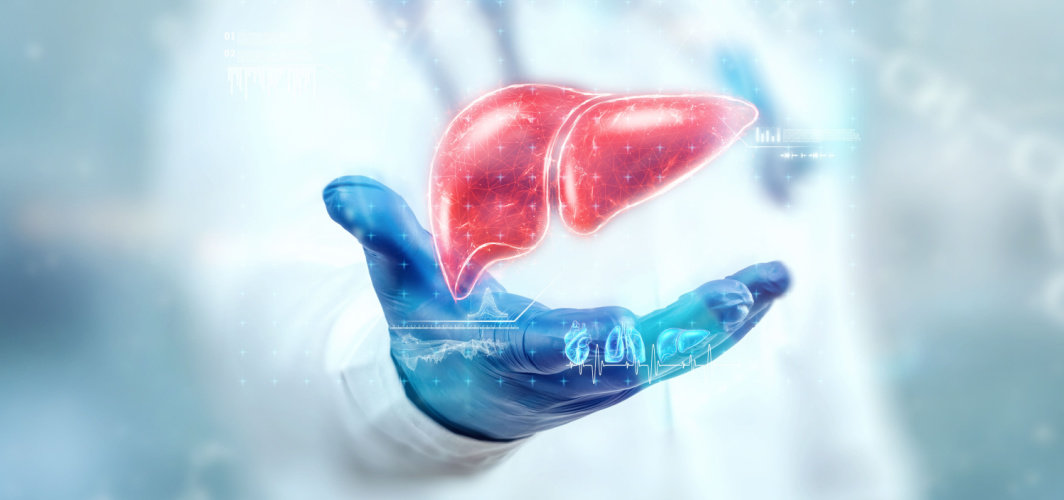- Home
- Blog
- General Health
Brain Stroke: Symptoms, Cause, Diagnosis, Treatment, Prevention
General Health
Brain Stroke: Symptoms, Cause, Diagnosis, Treatment, Prevention
By Apollo Pharmacy, Published on- 18 July 2023, Updated on -22 August 2024
Share this article
0
0 like

Brain stroke, also known as a cerebrovascular accident (CVA), is a medical emergency that occurs when the blood supply to the brain is interrupted or reduced. Delays in treatment can lead to permanent disability or even death. Stroke is now the fourth leading cause of death and the fifth leading cause of disability globally. Given the devastating consequences of brain strokes, it is crucial to recognise its symptoms and seek immediate medical attention. In the following sections, we will delve deeper into the types of brain stroke, risk factors, symptoms, treatment options, and preventive measures.
Types of Brain Stroke
1. Ischemic Stroke
An ischemic stroke occurs when a blood clot blocks a blood vessel in the brain, cutting off the supply of oxygen and nutrients.
Common causes include:
- Atherosclerosis (hardening and narrowing of the arteries),
- Blood clots
- Embolism
Risk factors for ischemic stroke include:
- High blood pressure
- Smoking
- Diabetes
- Obesity
- High cholesterol levels
2. Haemorrhagic Stroke
A haemorrhagic stroke occurs when a weakened blood vessel ruptures and bleeds into the brain.
Causes of haemorrhagic stroke can include:
- Uncontrolled high blood pressure
- Aneurysms
- Arteriovenous malformations (AVMs)
- Use of certain medications like anticoagulants.
Risk factors for haemorrhagic stroke include:
- High blood pressure
- Smoking
- Excessive alcohol consumption
- Age (over 55)
- Family history of stroke
Symptoms of Brain Stroke
Common symptoms of brain stroke include:
- Sudden numbness or weakness in the face, arm, or leg on one side of the body
- Confusion or trouble speaking or understanding speech
- Difficulty seeing in one or both eyes
- Severe headache with no known cause
Additional symptoms based on the affected area of the brain:
- Loss of balance or coordination
- Dizziness or vertigo
- Difficulty swallowing
- Changes in behaviour or mood
Recognising these symptoms is crucial as early intervention can significantly improve outcomes.
Causes of Brain Stroke
1. Lifestyle Factors and Medical Conditions
- Hypertension (High Blood Pressure): Uncontrolled high blood pressure can damage blood vessels in the brain, leading to a stroke. Monitor your blood pressure regularly using a BP monitor and take prescribed medications if necessary.
- Diabetes: People with diabetes have a higher risk of stroke due to complications such as high blood sugar levels damaging blood vessels and increasing the chances of clot formation. You can check your blood sugar levels in the comfort of your home with glucometers.
- High Cholesterol Levels: Elevated cholesterol can lead to the buildup of plaque in the arteries, including those supplying the brain. This can result in a blockage or rupture, causing a stroke. Keep a constant check on your cholesterol levels with a lipid profile test.
- Obesity and Sedentary Lifestyle: Being overweight or inactive increases the risk of high blood pressure, diabetes, and high cholesterol levels, thereby increasing the likelihood of experiencing a stroke.
- Smoking and Tobacco Use: Smoking damages blood vessels and reduces the oxygen supply to the brain. It also contributes to the formation of clots, making smokers more prone to strokes.
- Excessive Alcohol Consumption: Heavy drinking can raise blood pressure and increase the risk of atrial fibrillation, both of which are associated with an increased risk of strokes.
By addressing these lifestyle factors and managing underlying medical conditions, you can significantly reduce your risk of experiencing a brain stroke.
2. Other Risk Factors
Let's explore some of the other risk factors associated with brain strokes:
- Age and Gender: Advancing age is a significant risk factor for strokes, with the likelihood increasing after the age of 55. Additionally, men have a higher risk of experiencing strokes than women, although women tend to have more severe strokes.
- Family History of Stroke or Heart Disease: If you have a family history of strokes or heart disease, your risk of experiencing a stroke is heightened. Genetic factors can play a role in the development of stroke-related conditions, so it's important to be aware of these conditions running in your family.
Diagnosing Brain Stroke
Some of the common methods used to diagnose a brain stroke include:
1. Physical Examination and Medical History Assessment
- During a physical examination, healthcare providers will evaluate your symptoms, check for any visible signs of a stroke, and ask questions about your medical history.
- This assessment helps in identifying risk factors such as high blood pressure, diabetes, or previous strokes.
2. Imaging Tests
- CT Scan (Computed Tomography): This non-invasive procedure uses X-rays to create detailed images of the brain. It can help identify bleeding or blocked blood vessels that may have caused the stroke.
- MRI (Magnetic Resonance Imaging): This imaging technique uses powerful magnets and radio waves to produce detailed images of the brain. It provides clearer and more precise images compared to a CT scan.
- Angiogram (Cerebral Angiography): This test involves injecting a contrast dye into blood vessels and taking X-ray images to visualize any abnormalities or blockages in the arteries supplying the brain.
These diagnostic procedures are essential in accurately diagnosing a brain stroke and determining the most suitable treatment plan. Remember, early intervention is crucial in minimising the damage caused by a stroke.
How is a Brain Stroke Treated?
Emergency treatment should be sought immediately upon recognising the symptoms of a brain stroke. By acting quickly, one can significantly increase the chances of a successful recovery and minimise potential long-term damage.
Two main treatment options for brain stroke are thrombolysis and endovascular procedures.
1. Thrombolysis (Clot-Busting Medication)
Thrombolysis involves using clot-busting medication to dissolve the blood clot causing the stroke.
This medication, also known as tissue plasminogen activator (tPA), needs to be administered within a specific time frame from the onset of symptoms. It works by dissolving the clot, restoring blood flow to the affected part of the brain.
Thrombolysis has proven to be effective in reducing disability and improving outcomes for patients if given promptly.
2. Endovascular Procedures (Mechanical Thrombectomy)
Endovascular procedures involve physically removing the clot from the blocked blood vessel using specialised tools inserted through a catheter.
This procedure is known as mechanical thrombectomy and is particularly beneficial for larger clots that cannot be dissolved by medication alone.
It has shown remarkable success in restoring blood flow and improving patient outcomes when performed within a certain window of time.
Rehabilitation and Recovery After a Brain Stroke
Rehabilitation and recovery after a brain stroke is a crucial part of the treatment process. Here are some key aspects of rehabilitation and recovery:
- Medications for Stroke Prevention: After a stroke, your doctor may prescribe medications to prevent future strokes. These may include antiplatelet drugs, anticoagulants, or cholesterol-lowering drugs.
- Physical Therapy: Physical therapy focuses on improving mobility and strength. It may include exercises to improve balance, coordination, and range of motion. Rehabilitation specialists may also use assistive devices such as walkers or canes to aid in walking.
- Occupational Therapy: Occupational therapy helps individuals regain their ability to perform daily activities such as dressing, cooking, and bathing. Therapists may recommend adaptive equipment or modifications to make these tasks easier.
- Speech Therapy: Speech therapy is essential for patients who experience difficulty with speech, language, or swallowing after a stroke. Therapists use techniques to improve communication skills and address swallowing issues.
Rehabilitation and recovery require a multidisciplinary approach involving healthcare professionals such as physiotherapists, occupational therapists, speech therapists, and psychologists. With proper rehabilitation, individuals can make significant progress in their recovery journey.
How to Prevent a Brain Stroke?
A. Managing Lifestyle Factors
1. Healthy Diet
- Consuming a diet rich in fruits, vegetables, whole grains, lean proteins, and low-fat dairy products.
- Reducing the intake of saturated fats, trans fats, and cholesterol.
- Limiting sodium (salt) intake to maintain blood pressure.
2. Regular Exercise
- Engaging in moderate-intensity aerobic activities for at least 150 minutes per week.
- Incorporating strength training exercises twice weekly.
3. Stress Management
- Practising relaxation techniques such as deep breathing, meditation, or yoga.
- Engaging in hobbies or activities that promote relaxation and joy.
4. Smoking Cessation
- Quitting smoking and avoiding exposure to secondhand smoke.
- Seeking support from healthcare professionals or support groups to help quit the habit.
5. Limiting Alcohol Consumption
- Since there is no safe limit for alcohol consumption, it is best to avoid it completely.
- Those who wish to consume alcohol should avoid drinking more than 1-2 drinks a day.
B. Medical Interventions
1. Medications for Hypertension, Diabetes, and High Cholesterol
- Hypertension, diabetes, and high cholesterol are common risk factors for stroke. Managing these conditions through medication can significantly reduce the risk of a brain stroke.
- Medications like ACE inhibitors, beta-blockers, diuretics, and calcium channel blockers are commonly prescribed to control blood pressure.
- Statins are often prescribed to lower cholesterol levels and prevent plaque buildup in the arteries.
2. Antiplatelet Drugs and Anticoagulants
- Antiplatelet drugs like aspirin and clopidogrel help prevent blood clot formation by inhibiting platelet aggregation.
- Anticoagulants such as warfarin or novel oral anticoagulants (NOACs) are prescribed for certain types of stroke caused by blood clots.
- These medications require careful monitoring and adherence to dosage instructions.
3. Carotid Endarterectomy or Stenting
- Carotid endarterectomy is a surgical procedure used to remove plaque from the carotid arteries that supply blood to the brain.
- Carotid stenting involves placing a stent to widen a narrowed carotid artery and improve blood flow.
- These procedures are usually recommended for patients with significant blockages in the carotid arteries to reduce the risk of stroke.
Remember, always consult your healthcare provider before starting any medication or undergoing any medical procedure.
Conclusion
When it comes to brain stroke, recognising the symptoms is crucial for early intervention and better outcomes. Prompt medical attention and necessary lifestyle changes can make a significant difference in preventing stroke and associated permanent disabilities.
Notably, blood pressure is one of the major factors influencing brain stroke. Keep a constant check on your blood pressure with BP monitors.
Medically reviewed by Dr Sonia Bhatt.
Services
General Health
Frequently asked questions
No, strokes aren't always fatal. However, they may lead to permanent disabilities in some cases.
Being physically active, eating a low-fat diet, and reducing stress levels can go a long way in keeping strokes at bay.
Yes, smoking can increase your risk of developing a stroke as it constricts the blood vessels. Hence, one must quit smoking completely.
Walking, jogging, swimming, cycling, and running are some exercises which can be practised after a stroke.
The treatment options for a brain stroke depend on the type and severity of the stroke. However, immediate medical attention is essential to prevent permanent disability. Medications such as clot-dissolving drugs or surgery may be used in certain cases.
Leave Comment
Services
Recommended for you
.jpg?tr=q-85)
General Health
Orofer XT Tablet: How It Helps in Treating Iron Deficiency?
Orofer XT Tablet is a supplement that helps you gain optimal iron levels. In this article, you will get to know about how Orofer XT works, its benefits, dosage, potential side effects, and tips to make the most of your treatment.

General Health
Can Liv 52 Syrup Help In Liver Detoxification?
Discover the benefits of Liv 52, a powerful liver health supplement. Learn how it supports liver function, helps detoxify the body, and promotes overall well-being.

General Health
10 Omega-3 Fatty Acids Foods For Improved Overall Health
Discover the top omega-3 fatty acids foods that can enhance your health. Learn about their benefits and how to incorporate them into your diet.
Subscribe
Sign up for our free Health Library Daily Newsletter
Get doctor-approved health tips, news, and more.

